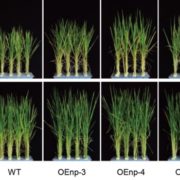
What We're Reading: May 11th
Blog, Research, Research Blog, WWR Full PostPhotosynthesis Special Issue
This week's 'What We're Reading' summarizes the latest papers from the field of photosynthesis research. This includes three reviews: the first focuses on the effect of elevated CO2 on secondary metabolism, the second looks at ways to improve carbon fixation, and the…

What We're Reading: May 4th
WWR Full PostReview: A newly proposed plastid: the xyloplast ($)
In its simplest definition, a plastid is an organelle that manufactures and stores essential chemical compounds used by its host cell. Numerous plastids exist beyond the familiar chloroplast. Chromoplasts synthesise and store carotenoid pigments,…
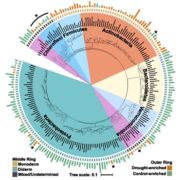
What We're Reading: April 27th
WWR Full PostReview: Venus Flytrap: How an excitable, carnivorous plant works
The one sure-fire way to get children excited about plants is to show them how a Venus flytrap works. But how does it work? We’ve all heard that the trap “counts” the number times it is triggered, and that it requires two or…

What We're Reading: April 13th edition
WWR Full PostGuest Editor: Dr. Elisa Dell’Aglio
Elisa holds a PhD in Plant Biochemistry from the University of Grenoble – CEA (France) and just finished a first Post-Doc at the University of Geneva, Switzerland. She has been a Plantae Fellow since September 2017. Her work is aimed at understanding how cofactors,…
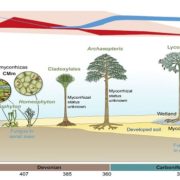
What We're Reading: April 6th
WWR Full PostReview: The origin and evolution of mycorrhizal symbioses
Many fungi are pathogens that kill or weaken their plant hosts. However, there are also many species that form beneficial relationships with plants, algae, and cyanobacteria. One of these mutualisms is the mycorrhizal association between a…
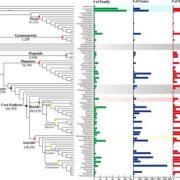
What We're Reading: March 30th
WWR Full PostCommentary. 10KP: A phylodiverse genome sequencing plan
Nobody doubts the great insights we have gained about plant diversity and evolution from genome sequencing, but the patchy nature of available genomes within the plant phylogeny remains a problem. Cheng et al. describe the 10KP (10,000 Plants)…

What We're Reading: March 23rd
WWR Full PostReview. Autophagy: The master of bulk and selective recycling
A functioning cell depends upon the appropriate production of proteins and macromolecules. The other end of the process, degradation and removal, is just as critical and just as selective. Marshall and Vierstra review autophagy (“self-eating”)…
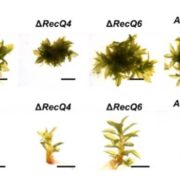
What we're reading: March 16th
WWR Full PostLetters: Auxin and vesicle traffic
Three letters to Plant Physiology address the role of vesicles in auxin transport, discussing the evidence and conclusions from a recently published paper from three perspectives. Does auxin accumulate in endocytic vesicles? If so, how, and why? The Letters address…

What We're Reading: March 9th
WWR Full PostReview. Plant evolution: landmarks on the path to terrestrial life
"Simply put, land plants evolved once; the biological significance of this singularity is writ large across the surface of the globe." When I consider the incredible diversity found in life's rich tapestry, I'm continually amazed that…

